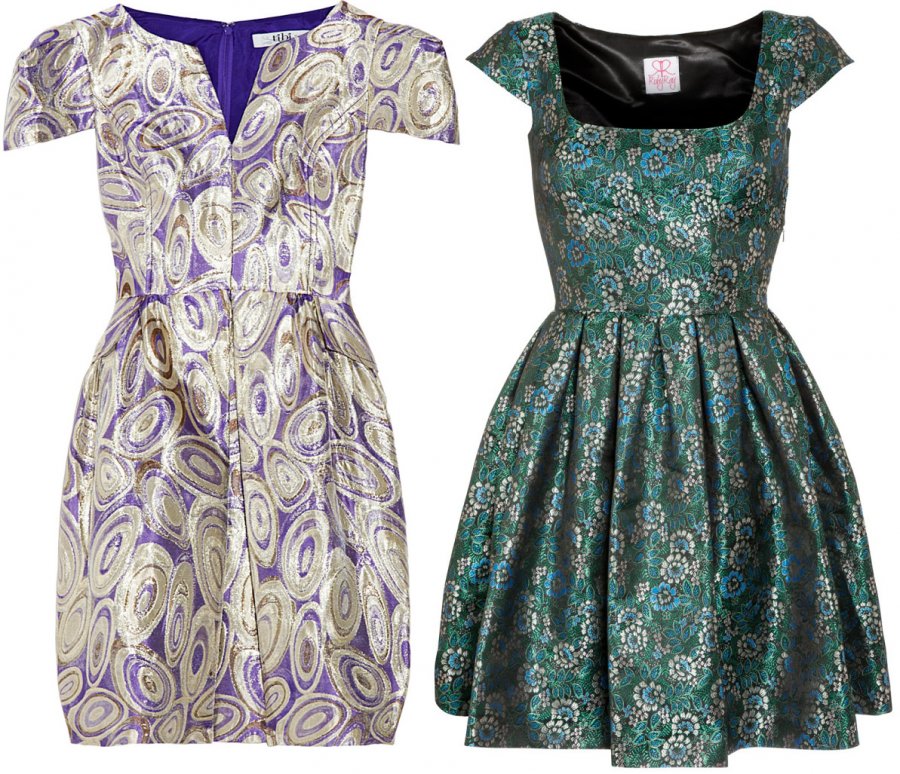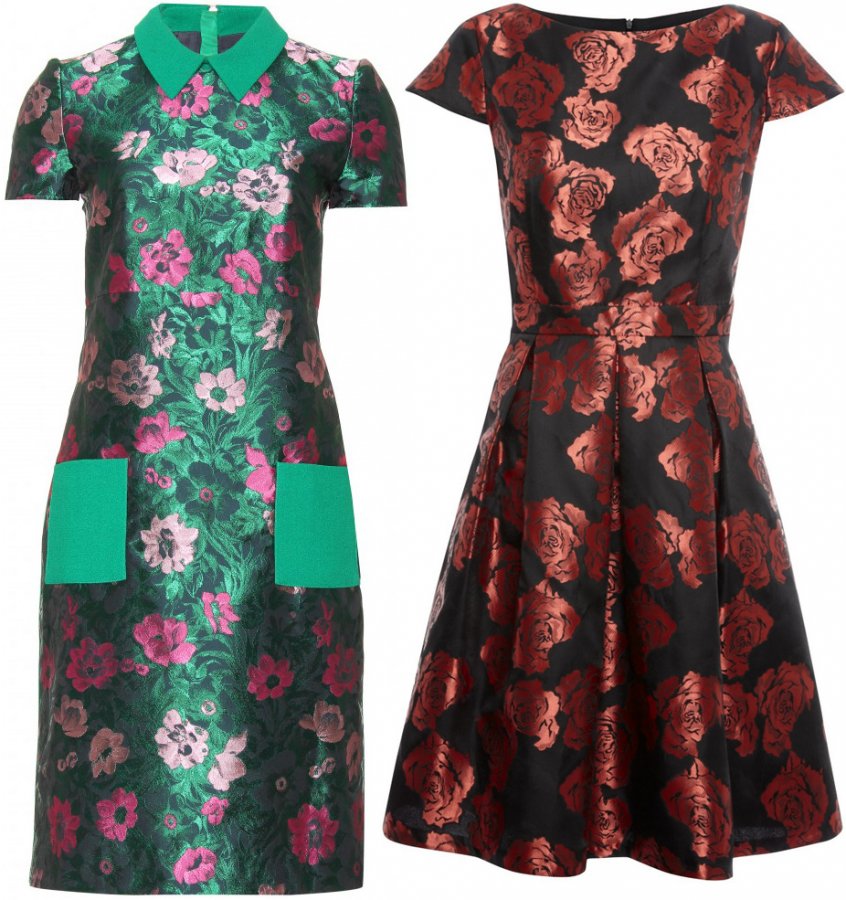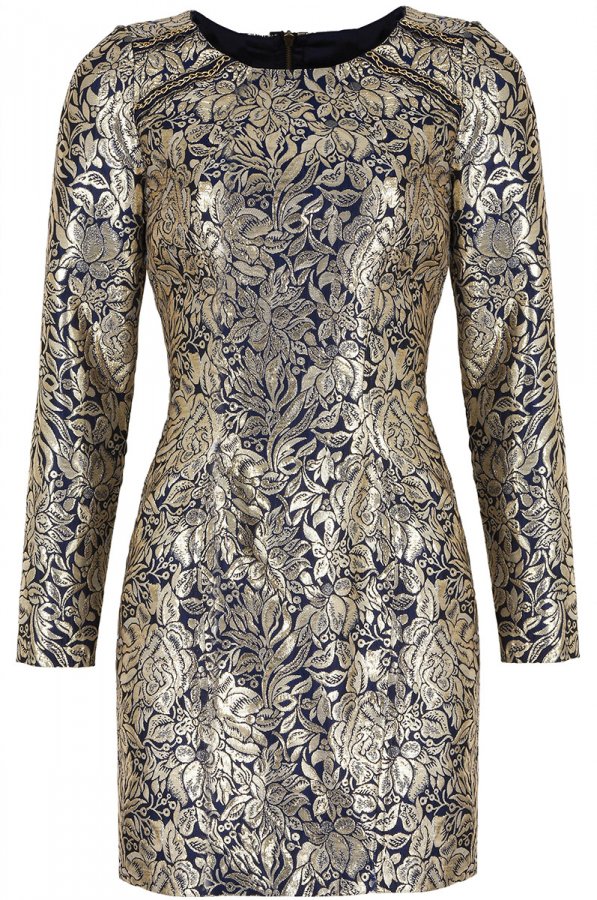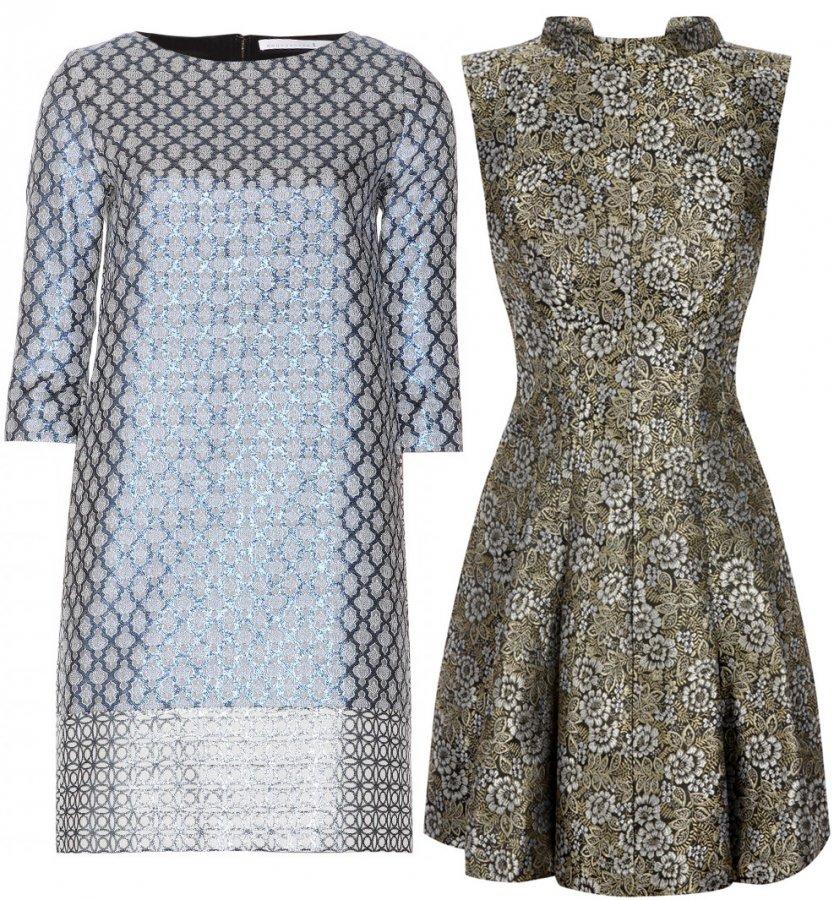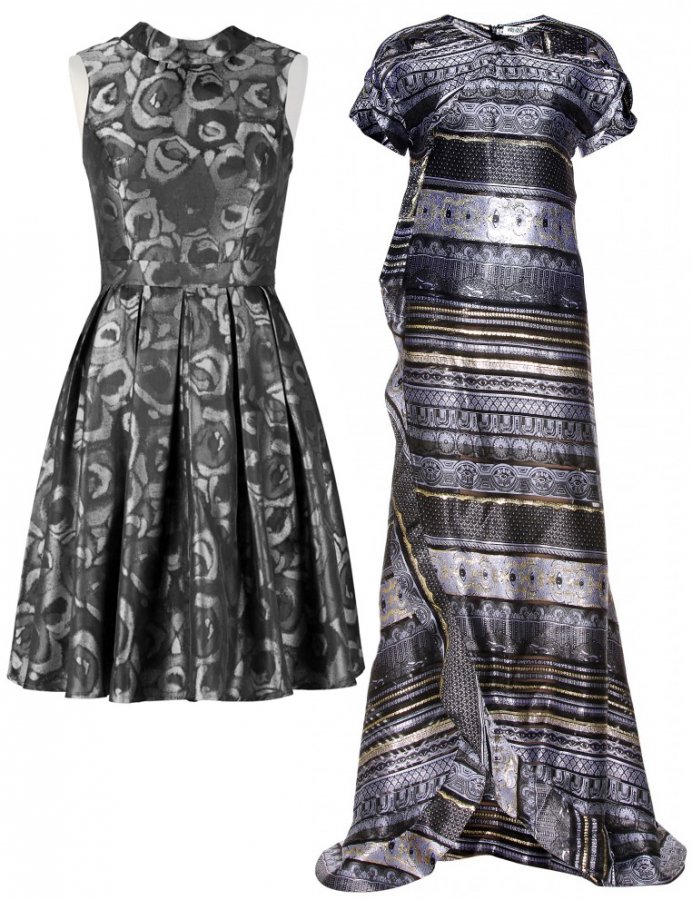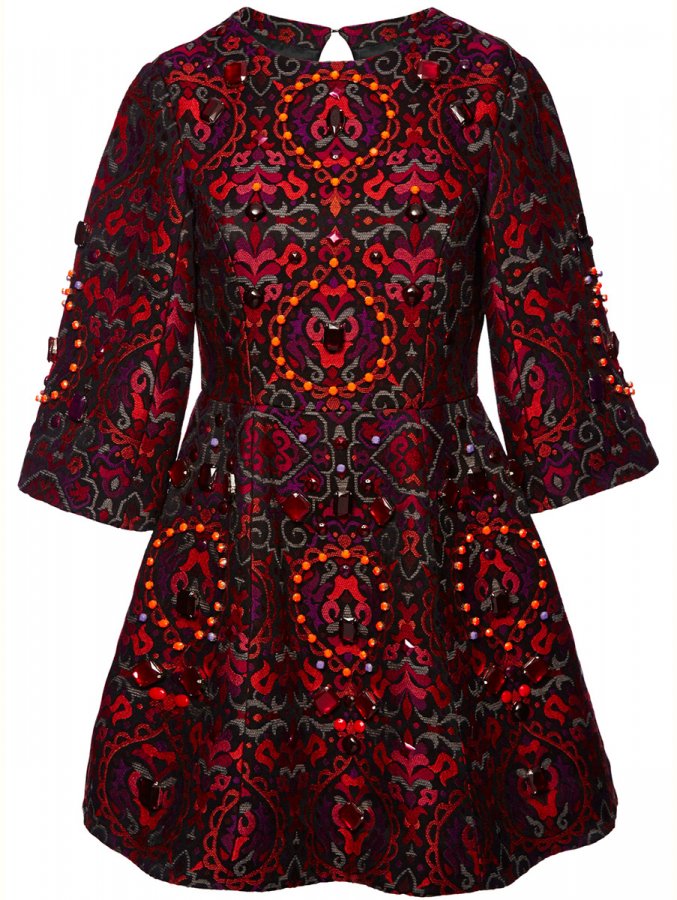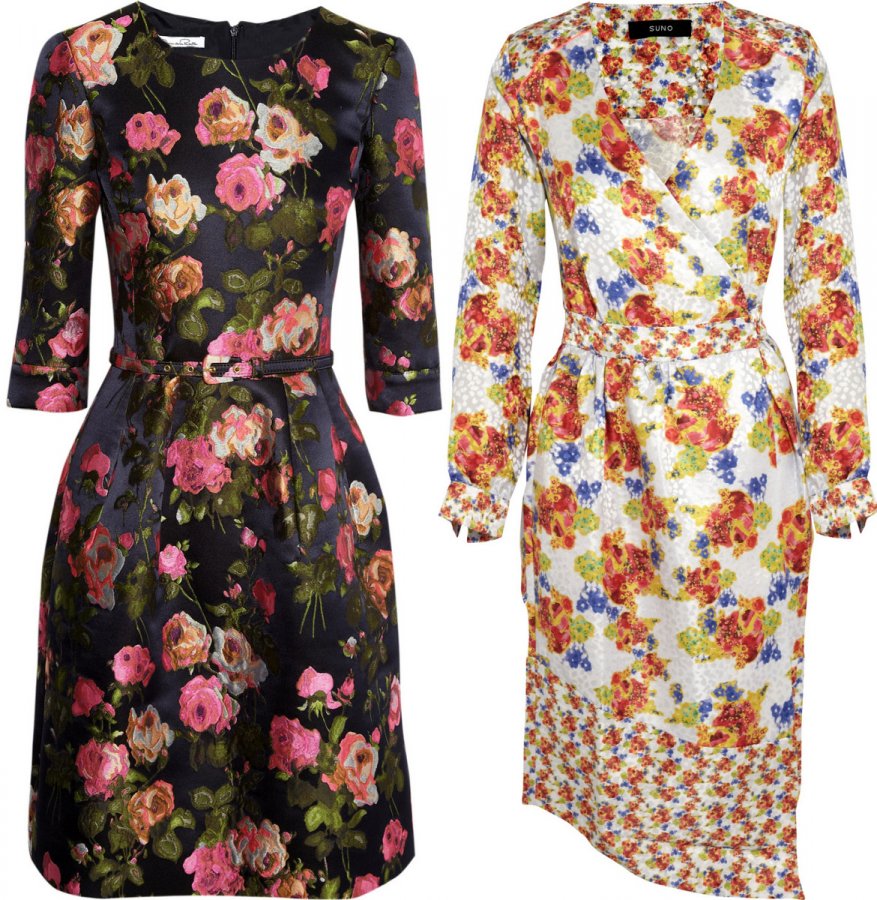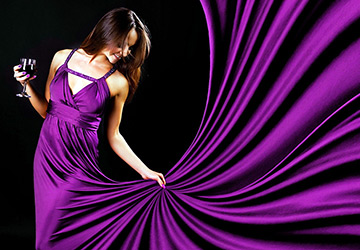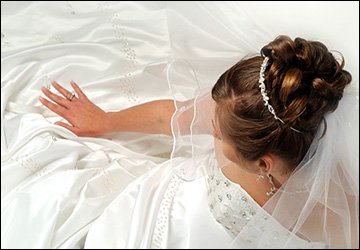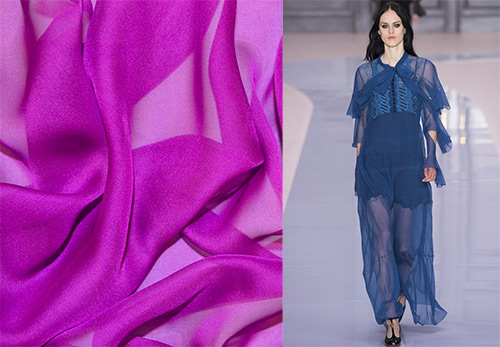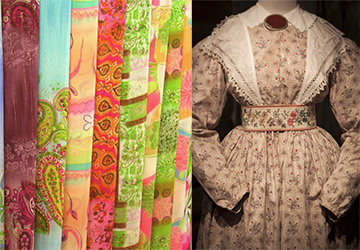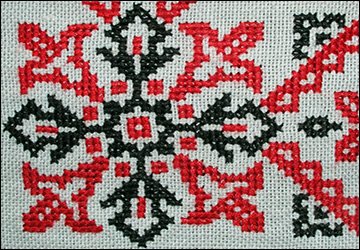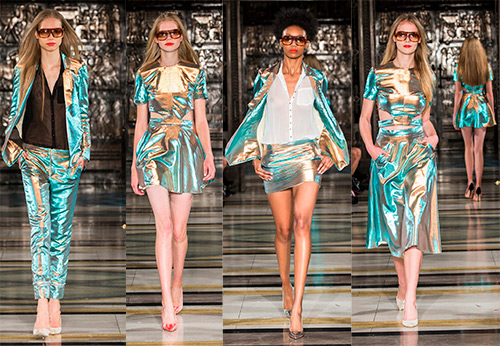Beautiful dresses
Jacquard fabrics
Today, rich design of fabrics is in fashion. There is a lot of shine in the fabrics - gold, silver, metallized threads; drawings and ornaments borrowed, one might say, from all the cultural wealth that has been accumulated by mankind over many centuries. Flowers of Russian shawls, ancient Persian miniatures, Baroque compositions, Byzantine ornaments made of circles and crosses - all this takes on a fashionable effect in combination with the sheen of lurex and synthetic monofilaments. Glorious ancient traditions are perfectly combined with various fashionable techniques - hand-painted, beadwork, sequins, bugles, sequins.
One of the fabrics that is so richly decorated and represents luxury and elegance, beloved and in demand at all times, is jacquard fabric. It is distinguished by the beauty of the embossed ornament. On the seamy side of the fabric, the ornament appears according to the negative principle - the shiny surface becomes matte, the color of the pattern changes.
The fabric was first made on the machines of Joseph Marie Jacquard (1752 - 1834). It was he who at the beginning of the 19th century invented the first jacquard machine. The share of manual labor has decreased, the weaving process has accelerated, and fabrics with patterns of any complexity have appeared. Jacquard compositions are determined by fashion. It can be both geometric and floral.
In Russia, the production of jacquard fabrics began in the first quarter of the 19th century at the Kupavinskaya manufactory, near Moscow. Kupavin bedspreads became the signature products of this manufactory - handkerchiefs with very large patterns. After the appearance of knitwear, jacquard ones also appeared among knitting machines, on which multi-color patterned knitted fabrics were created.
What kind of raw materials are used in the manufacture of jacquard fabric?
Jacquard fabrics made from natural silk yarn or natural silk mixed with other fibers are among the most expensive and few in number. These fabrics are characterized by a satin background made of natural silk and a pattern of triacetate yarns. More often, jacquard fabric is produced from artificial yarns - diacetate and triacetate, sometimes viscose yarns of various twists. Jacquard fabrics are produced with the addition of metallized threads: plasticlex, methanite, lurex, etc. These are jacquard satins, moire, taffeta and other fabrics.
There is a group of fabrics that are produced from artificial, usually diacetate and triacetate, threads in the warp, and synthetic threads in the weft ?. If you use in this case highly stretchable and differently shrinkable yarns, this allows you to produce fabrics with a characteristic "corrugation" and "shred" surface.
Jacquard fabrics made from artificial and synthetic threads, which are created by burning artificial (viscose) threads, are very interesting. Using sulfuric acid, according to the drawing, during burning, viscose threads are removed in certain places of the fabric. In these places, a thin mesh of synthetic (nylon) threads remains, and in other areas this mesh is closed with a dense overlay of viscose threads. It turns out a very interesting and original drawing.
There are fabrics that imitate jacquard. These fabrics are made with a printed pattern. Jacquard fabrics are an absolute sign of elegance. Most often they have floral motifs, refined and scattered over the main background. The various weaves that form the motifs and their contrast with the synthetic threads of the background give these fabrics a three-dimensional effect, sometimes reminiscent of cameos or porcelain bas-reliefs. Ornamental oriental motives are used along with floral motifs. Ornaments are enlivened by the addition of voluminous fluffy yarns (acrylic, viscose, woolen). This enhances the contrast of textures and diversifies the relief.
Despite the complexity of the motifs and ornaments, the impression of excess does not arise, and this is due to the solid color scheme in a single tonality. Jacquard fabrics are also produced with the addition of cotton or linen in combination with polyester, rayon or polyamide. Then landscape compositions on fabric become dull. Acetate is also used for this group of fabrics. It was the acetate that everyone was, one might say, in shock from in the 70s. Yes, indeed, the acetate silk of the 70s, which was intended for sewing dresses, recalls something terrible ... This application could not be called successful. The body, dressed in a dress made of acetate silk, "suffocated". And besides, in order to sit down in such a dress, one had to think carefully about how to smooth it out later. Yes, and this fabric could remain on the iron. But in other fabrics in combination with other fibers, it is quite appropriate.
Jacquard fabrics in summer are prom dresses. Although for the office, a dress made of this fabric, depending on the style, can also be a good option. On the most solemn day - a wedding (it doesn't matter who you turn out to be - a bride or bridesmaid) a jacquard fabric dress will look elegant. To see this, take a look at the dresses from the collections of famous designers ...
Comments and Reviews
Add a comment
Rating news
Shades of clothing that make women look younger
What shades of hair make women younger: rules and photos
Funny wedding dresses - photos and ideas
12 most expensive down jackets for the winter
How to look 25 at 40: tips from supermodels
Beautiful schoolgirls
Anti-aging haircuts and hairstyles for women
Fashionable skirts for autumn and winter
Fashionable women's trousers for the cold season
Fashionable and stylish sandals for summer 2024
Spring-summer 2024
 Fashionable dresses and tops with thin spaghetti straps
Fashionable dresses and tops with thin spaghetti straps
 Bandana tops: how to wear stylishly and beautifully
Bandana tops: how to wear stylishly and beautifully
 How to put together the perfect men's wardrobe for the summer
How to put together the perfect men's wardrobe for the summer
 Fashionable shorts for spring-summer 2024
Fashionable shorts for spring-summer 2024
 Fashionable skirts for spring-summer 2024: a guide to online shopping
Fashionable skirts for spring-summer 2024: a guide to online shopping
 The most fashionable dresses spring-summer 2024: styles and colors
The most fashionable dresses spring-summer 2024: styles and colors
 Fashionable total look 2024: ideas of images and trends
Fashionable total look 2024: ideas of images and trends
